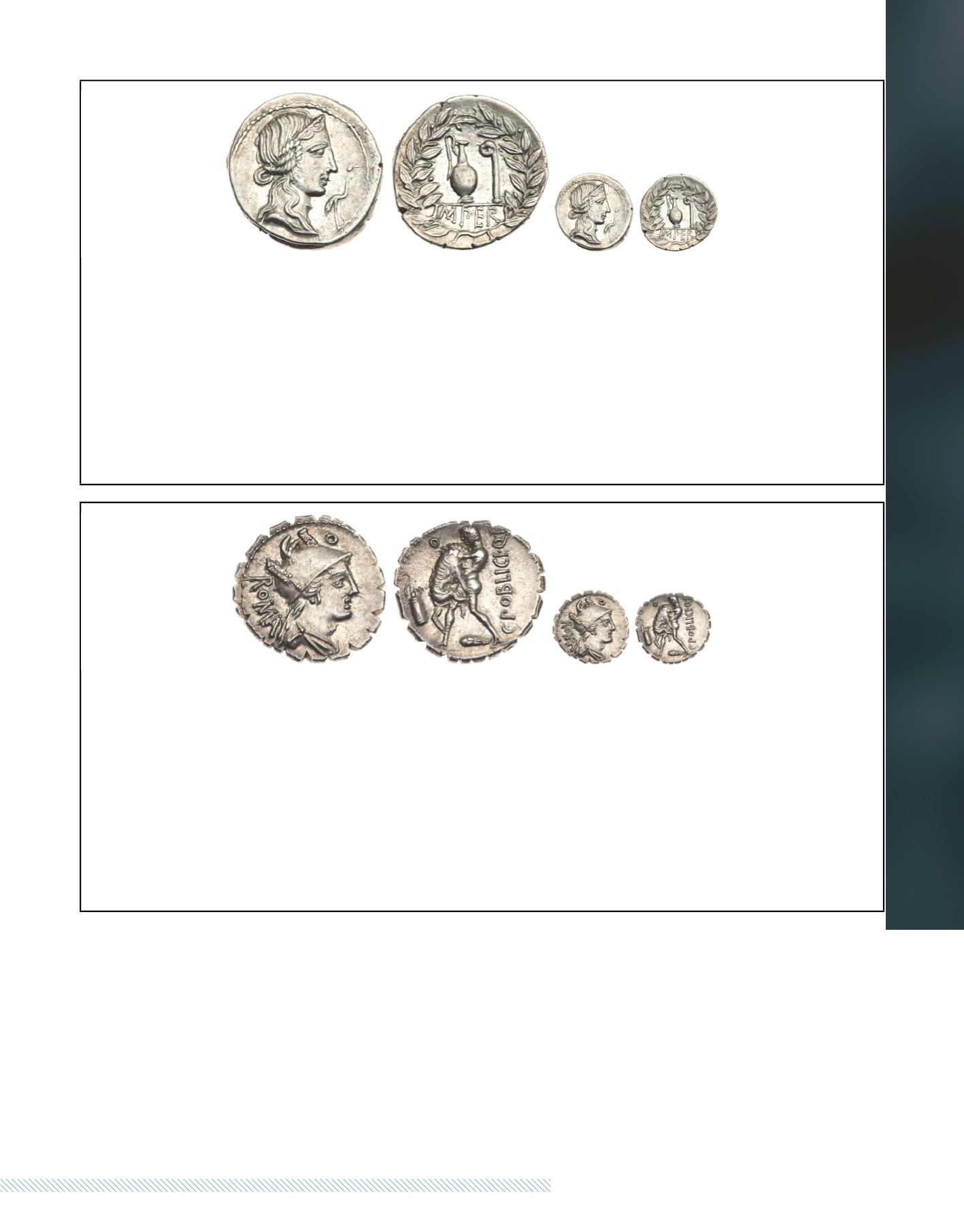

79
bid online at
www.goldbergcoins.com(800) 978-COIN (2646)
|
Enlargement
1942
Q. Caecilius Metellus Pius. Silver Denarius (3.68 g), 81 BC
. Mobile military mint with Sulla' s army in northern Italy. Diademed head of
Pietas right; to right, stork standing right.
Reverse
IMPER, jug and lituus within laurel wreath. Crawford 374/2; Sydenham 750; Caecilia 44.
Well struck, well centered and lustrous.
Nearly Mint State
.
Q. Caecilius Metellus Pius came from one of the most important and wealthiest families of Rome. Beginning in the 3rd century BC, his family
held numerous consulships, tribunates, censorships and military commands. His father, Q. Caecilius Metellus Numidicus, was the chief com-
mander in the Jugurthine War in Numidia until Marius displaced him, and was later censor until driven into exile by Marius. The obverse of this
coin portrays the goddess Pietas and alludes to the moneyer' s
cognomen
, Pius. The moneyer acquired the honorable title from the people of
Rome, whom he had beseeched in order to secure the restoration from exile of his father. The reverse probably refers to an unattested augu-
rate of the moneyer' s father, but may also allude to Sulla' s holding of the augurate in ca. 82 BC (cf. Crawford p. 374).
Estimated Value ............................................................................................................................................................... $1,500 - 2,000
Ex Nomos 5 (25 October 2011), 219; Ex Exceptional Roman Denarii Coll. #3030
.
Enlargement
1943
C. Poblicius Q.f. Silver Denarius (3.65 g), 80 BC
. Rome. ROMA behind, draped bust of Roma right, wearing Phrygian helmet ornamented
with plumes on sides; above, O.
Reverse
C POBLICI Q F, Hercules standing left, strangling the Nemean lion; between his feet, club; in left
field, bow and quiver; above, O. Crawford 380/1; Sydenham 768; Poblicia 9. Boldly struck, well centered and lustrous, all delicately toned.
Mint State
.
Although the moneyer is unattested except for his coins, his family is well known for having built the small Aventine road, the Clivus Poblicius,
as well as the temple of Flora, whose games they instituted in 241 BC. The types chosen by the moneyer for his coins should probably be
viewed in light of Sulla' s victories, but possibly there is a family connection as well. The reverse type showing Hercules strangling the Nemean
lion may allude to the moneyer' s family origins at Cora, where there was a famous temple to Hercules, and from Cora even further back to
Argos and the valley of Nemea where Hercules killed the lion. The Phrygian helmet worn by Roma seems to be a simple artistic feature, with
no further significance other than perhaps reflecting an awareness of Trojan origins.
Estimated Value ............................................................................................................................................................... $1,500 - 2,000
Ex Künker 174 (9 September 2010), 534; Ex Exceptional Roman Denarii Coll. #3031
.



















